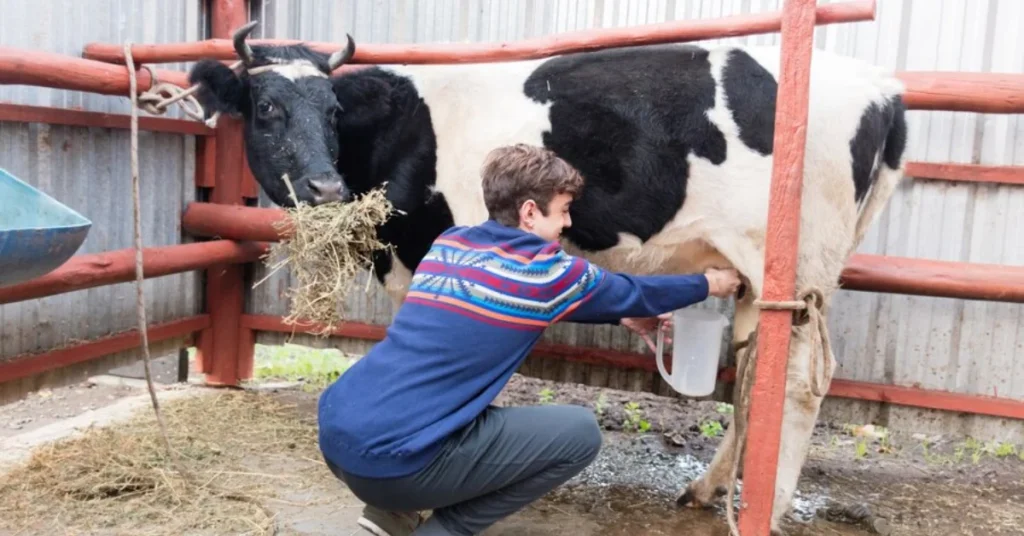Transmissible Spongiform Encephalopathies (TSEs) are a group of rare, progressive, and often fatal neurodegenerative diseases caused by prions—misfolded proteins that can induce other proteins in the body to also misfold. These diseases affect both animals and humans, and their impact on public health, agriculture, and scientific research has been profound. Among the most well-known TSEs are Mad Cow Disease (Bovine Spongiform Encephalopathy or BSE) and Creutzfeldt-Jakob Disease (CJD). While both diseases share common features, they also have distinct characteristics that define their origins, transmission, and effects. Understanding the different types of TSEs and their impact is essential for both prevention and treatment efforts.
What Are Transmissible Spongiform Encephalopathies (TSEs)?
TSEs are characterized by the accumulation of abnormally folded prion proteins in the brain. These misfolded proteins cause progressive damage to brain tissue, leading to symptoms such as memory loss, behavioral changes, motor dysfunction, and ultimately, death. The name “spongiform” refers to the sponge-like appearance of the affected brain tissue, which results from neuronal death and the formation of cavities within the brain.
TSEs can be categorized into different types based on the species affected, the method of transmission, and the clinical presentation. The most well-known TSEs include Bovine Spongiform Encephalopathy (BSE) in cattle, Creutzfeldt-Jakob Disease (CJD) in humans, Gerstmann-Sträussler-Scheinker Syndrome (GSS), Fatal Familial Insomnia (FFI), and Kuru.
Mad Cow Disease (BSE): The Animal-Origin TSE
Bovine Spongiform Encephalopathy (BSE), commonly known as Mad Cow Disease, is a prion disease that affects cattle. It became infamous in the 1980s and 1990s due to its link to an outbreak of a variant of Creutzfeldt-Jakob Disease (vCJD) in humans. The primary cause of BSE in cattle is the consumption of contaminated feed that contains prion-infected animal parts, particularly brain and spinal cord tissues. This practice, known as feeding cattle meat and bone meal, was a common practice in the livestock industry and contributed to the spread of BSE.
Symptoms of BSE in cattle include abnormal behavior, difficulty walking, and loss of coordination. Infected cows may also exhibit aggression, difficulty standing, and a general lack of responsiveness. BSE progresses slowly, and cattle typically show clinical signs only after a prolonged incubation period. Once diagnosed, there is no cure, and infected animals must be euthanized to prevent further transmission.
BSE has significant public health implications, especially regarding its potential to infect humans. Variant Creutzfeldt-Jakob Disease (vCJD) is the human form of prion disease that is linked to BSE. vCJD is a rare but deadly disease that results from eating meat contaminated with prions from infected cattle. The first cases of vCJD were reported in the United Kingdom in the mid-1990s, sparking a widespread public health scare.
Creutzfeldt-Jakob Disease (CJD): The Human TSE
Creutzfeldt-Jakob Disease (CJD) is one of the most well-known prion diseases in humans. It is a rare and fatal neurodegenerative disorder that typically occurs in one of three ways: sporadically, genetically, or acquired through exposure to infected tissue. While CJD shares similarities with other prion diseases, its clinical presentation and causes vary depending on its subtype.
- Sporadic CJD: The most common form, accounting for approximately 85–90% of cases, occurs without any known cause. It typically affects older adults and progresses rapidly, with symptoms including memory loss, personality changes, coordination problems, and visual disturbances. The disease advances quickly, leading to coma and death within a year of symptom onset.
- Genetic CJD: Inherited forms of CJD are caused by mutations in the PRNP gene, which encodes the prion protein. These genetic mutations predispose individuals to prion misfolding, leading to the development of the disease, often at a younger age than sporadic CJD.
- Acquired CJD: This form of the disease is rare and results from exposure to prion-infected tissue, usually through contaminated medical instruments, transplants, or consuming contaminated beef (as in vCJD). This form of CJD has been most commonly associated with cases of variant Creutzfeldt-Jakob Disease (vCJD), which is specifically linked to BSE.
Symptoms of CJD typically include rapid cognitive decline, muscle stiffness, and involuntary jerking movements (myoclonus). Like other TSEs, CJD ultimately leads to complete neurological failure and death. Because of its rapid progression, CJD is often diagnosed at an advanced stage, and effective treatments remain elusive.
Variant Creutzfeldt-Jakob Disease (vCJD): The Link Between BSE and Human Disease
Variant Creutzfeldt-Jakob Disease (vCJD) is the human prion disease most closely associated with Mad Cow Disease. It is thought to result from humans consuming beef products contaminated with prions from infected cattle, especially in regions where BSE was widespread in the 1980s and 1990s. Unlike classic CJD, vCJD typically affects younger individuals and has a longer incubation period.
The first cases of vCJD were reported in the United Kingdom, where a large outbreak of BSE occurred in the cattle population. As of now, several dozen cases of vCJD have been reported globally, mostly in the UK. The clinical presentation of vCJD includes psychiatric symptoms (such as depression and anxiety), followed by cognitive decline and motor dysfunction. A key diagnostic feature of vCJD is the accumulation of prion proteins in the lymphoid tissues, which is not typically seen in other forms of CJD.
In response to the BSE crisis, strict regulations were put in place to prevent contaminated beef from entering the food supply, significantly reducing the risk of vCJD. However, as the prion incubation period can be long, ongoing monitoring and research remain critical to understanding the full impact of the disease.
Other Human TSEs: GSS, FFI, and Kuru
In addition to CJD and vCJD, there are several other prion diseases that affect humans, most of which are genetic in nature:
- Gerstmann-Sträussler-Scheinker Syndrome (GSS): This rare inherited form of prion disease is caused by mutations in the PRNP gene. Symptoms include ataxia (loss of coordination), dementia, and muscle stiffness. GSS typically progresses slowly but is ultimately fatal.
- Fatal Familial Insomnia (FFI): FFI is another genetic prion disease caused by mutations in the PRNP gene. It is marked by the inability to sleep, leading to severe neurological deterioration and death within a few months to a few years.
- Kuru: Kuru was once prevalent among the Fore people of Papua New Guinea due to their ritualistic practice of consuming human brain tissue. This practice led to the spread of prions and the development of kuru, which is characterized by tremors, coordination issues, and progressive dementia. The disease is now almost eradicated as cannibalism has been abandoned.
The Impact of TSEs on Public Health and Agriculture
The impact of TSEs extends beyond individual health, affecting agriculture, food safety, and public policy. The BSE outbreak in cattle led to widespread regulatory changes in the meat industry, including bans on feeding animal products to livestock and stricter surveillance of cattle. These measures have been successful in reducing the incidence of BSE and vCJD, but ongoing vigilance is necessary to prevent new outbreaks.
In terms of human health, the scare surrounding vCJD led to significant changes in blood donation policies, as prions can potentially be transmitted through blood transfusions. Many countries have implemented blood bans for individuals who have lived in regions affected by BSE outbreaks.
Conclusion
From Mad Cow Disease to CJD, the different types of Transmissible Spongiform Encephalopathies have had far-reaching consequences for public health, agriculture, and scientific research. While significant progress has been made in controlling the spread of prion diseases, the unique nature of these diseases—combined with their long incubation periods and fatal outcomes—remains a significant challenge. Ongoing research is essential to better understand the biology of prions, improve diagnostic techniques, and develop potential treatments for these devastating diseases.
ALSO READ: The Importance of Heart Health: Prevention and Treatment of Cardiovascular Diseases Worldwide







